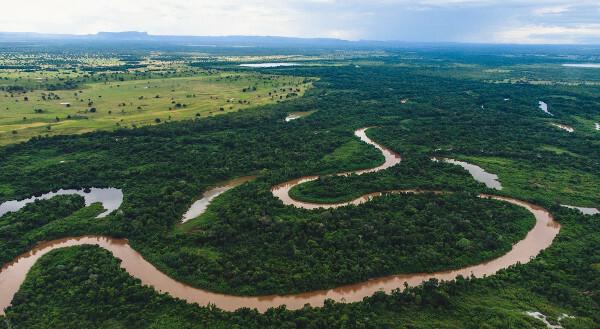A monkey pox It is a viral disease similar to smallpox human (eradicated in the world, in 1980, through a worldwide vaccination campaign), however, milder and less lethal. This disease was identified in 1958, after an outbreak with monkeys that were kept in the laboratory for research. In humans, the disease was first observed in 1970.
It is initially acquired through contact with a sick animal, and transmission between humans, considered rare, happens through contact with an infected person or through contaminated material, such as towels and bedding. Symptoms of monkeypox include fever, muscle aches, headache, exhaustion, enlarged lymph nodes and skin lesions.
Check out our podcast: 5 vaccines that made history
What is monkeypox?
Monkeypox (monkeypox, in English) is a rare disease and it was identified for the first time in monkeys in the year 1958, when two outbreaks of a smallpox-like disease occurred in monkeys kept in a laboratory for research. This is why the disease gets its name.
In humans, the disease was first observed in the year 1970
, in the Democratic Republic of Congo, and since then, cases have also been reported in other countries in Central and West Africa.Monkeypox is caused by a virus belonging to the genus Orthopoxvirus, of the family Poxviridae. Its virus has two strains, the West African strain and the Congo Basin strain (Central Africa), the latter being more virulent. It is still not known what the natural reservoir of this virus is, however, it is known that African rodents as well as non-human primates are capable of having it and transmitting it to people.
Transmission of monkeypox
A person can get monkeypox from having contact one animal or object infected by the virus or with a sick person. Transmission from animals to humans can occur, for example, as a result of a bite, a scratch or even the preparation, handling and ingestion of contaminated game meat.
Transmission from one human being to another is more difficult to occur and usually involves respiratory droplets, in which case prolonged personal contact is necessary. Other forms of transmission involve direct contact with body fluids or material from of wounds, in addition to indirect contact with wound material through, for example, bedding and towels.
In the 2022 outbreak,began to investigate whether transmission also occurred via sexual contact. In July 2022, the New England Journal of Medicine published an article entitled “Monkeypox Virus Infection in Humans across 16 Countries — April–June 2022”, which stated that there was a suspicion that, in 95% of the cases studied, transmission of the disease would have occurred through the sexual.
Also according to the article, thestrong probability of sexual transmission was supported by findings of primary lesions of the genital, anal and oral mucosa, which may represent the site of inoculation”. The authors also point out that there is the presence of viral DNA in the semen of some of the samples analyzed, but it is not known whether the viral DNA was competent for replication.
Monkeypox cases around the world
Monkeypox was identified for the first time in humans in the 1970s, inCongo Republic. Subsequently, other cases were identified in other countries in Central and West Africa, such as Cameroon, Côte d'Ivoire, Nigeria and Sierra Leone. Despite this, most cases have been observed in the Congo.
Cases outside Africa have also been reported., as in the United States and United Kingdom. These cases were related to international travel or contact with animals from Africa. The first outbreak outside Africa occurred in 2003, in the United States, and caused the infection of more than 70 people. At the time, the virus reached the US through contaminated animals.
Recently, in the year 2022, new smallpox casesyou monkeys were observed in regions outside Africa. Differently from what had been previously observed, in this new outbreak most of those infected did not present history of travel to areas where the disease is endemic. In addition, no outbreak had been registered simultaneously in several countries until then.
ANDn July of the same year, with more than 16,000 cases reported in 75 countries since May, the director general of WHO stated that the current outbreak of monkeypox constitutesíto a Public Health Emergency of International Concern (ESPII). At the time, the WHO considered the risk of smallpox to be moderate in all regions of the world, with the exception of the European region, in which the risk was considered high.
Know more: Ebola — a viral disease first seen in two countries in Africa
Signs and Symptoms of Monkeypox
Monkey pox presents symptoms similar to human smallpox, however, they are usually milder. Among them we can mention fever, muscle pain, headache and exhaustion. An important feature is the enlarged lymph nodes, which allows doctors to differentiate monkeypox from chickenpox or human smallpox.
One to three days after the onset of fever, symptoms appear. skin lesions. Initially these lesions appear on the face, later spreading to the rest of the body. Lesions may also appear on the genitals, and may occur as single genital lesions. In addition, monkeypox can cause sores in the mouth and anus. In general, the illness lasts from two to four weeks.
Can monkeypox kill?
the monkey pox It is a disease that can take the individual à death. According to the US Centers for Disease Control and Prevention (CDC), West African-type virus disease is rarely fatal, and Congo Basin virus disease has a fatality rate of about 10%. A higher risk of death and serious illness is observed, according to the CDC, in children under 8 years of age, people with immune system weakened, people with a history of eczema, and people who are pregnant or breastfeeding.
In the 2022 outbreak, the first monkeypox death outside Africa occurred in Brazil. The patient was a 41-year-old male who had serious Immunity and comorbidities.
How can I prevent monkeypox?
As highlighted earlier, the disease can be transmitted from animals to humans, therefore contact with animals that can transmit the virus should be avoided when visiting areas where the disease is endemic (Central and West Africa).
To prevent transmission from one person to another, it is important avoid close contract with sick people or who have symptoms suggestive of the disease. It is essential not to hug, kiss or have sex with sick people.
In addition, it is important not to share cups, cutlery or other objects of personal use with the patient. It is also essential not to handle towels, clothes or bedding from people with monkeypox. Another form of prevention is to always ensure that your hands are clean.
Smallpox and its Eradication
Smallpox is an infectious disease caused by a virus of the genus orthopoxvirus of the family Poxviridae. Is serious disease that killed about 400,000 people a year, according to the Oswaldo Cruz Foundation (Fiocruz). Also according to the Foundation, if we add up the number of deaths from all wars already fought in the world, we would not reach the number of victims of smallpox.
Smallpox was transmitted from one person to another through contact with contaminated objects and through the respiratory tract. The sick person would develop a series of rashes over the body, which would develop into blisters filled with pus. The lethality rate of the disease was close to 30%.
This deadly disease currently no longer occurs on the planet, being considered officially eradicated in May 1980. However, eradication was only possible through a worldwide effort that combined measures to contain the disease and vaccination. It is worth noting that the vaccine used to eradicate smallpox offers some protection against monkeypox.
image credit
[1] Wikimedia Commons (reproduction)
By Vanessa Sardinha dos Santos
Biology teacher
Do you know what biological weapons are? Click here, understand the...
Do you know the history of the vaccine? Click here to learn more...
Know the importance of vaccination and better understand how the...
Have you heard about the World Health Organization...
Know the reasons that triggered the popular uprising in...
Find out how the first vaccine arrived in Goiás during...
Have you ever heard of smallpox? Click here to learn more...



